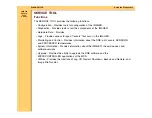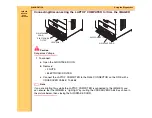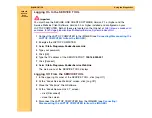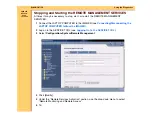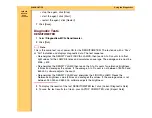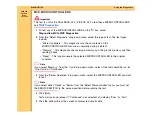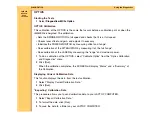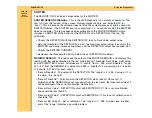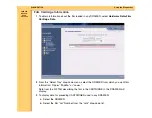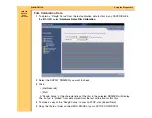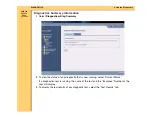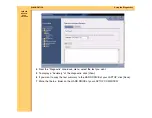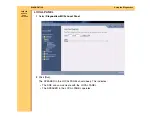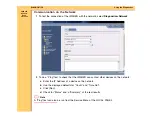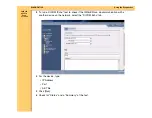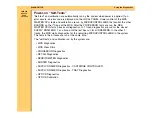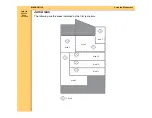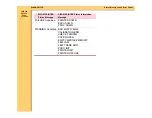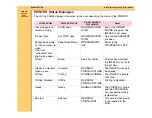
DIAGNOSTICS
Using the Diagnostics
30JUL07
8F2919
Page
23 of 326
SORTER
The SERVICE TOOL includes 2 diagnostics for the SORTER:
SORTER SENSOR Calibration
- This is the MCS diagnostic run normally at power on. The
test, run from the top part of the screen, displays diagnostic data, and indicates OK (or
“pass”). This is because the software does not stop the system because of errors caused by
EMITTER failures. (The SORTER can run successfully in a “no sensor” mode if the EMITTER
does not operate.) The test sequence does calibration of the SORTER SENSOR, which
includes an EMITTER at the bottom of the SORTER and a DETECTOR at the top. The
calibration:
•
Checks the DETECTOR with the EMITTER OFF to set a Dark Value output value.
•
Sets the threshold of the DETECTOR to 3.5V, the maximum output value, then starts the
EMITTER and slowly increases brightness until the DETECTOR output has reached 3.5 V.
•
Checks the EMITTER CURRENT.
•
Decreases the threshold to 350 mV below the set DETECTOR maximum.
MONITOR SENSOR
- This test reads the output of the SORTER SENSOR, and displays this
reading with the values recorded in the last calibration for Threshold, Dark Value, Light Value
and LED (EMITTER) Current. All values are in “counts” from 0 - 255, which indicate a “range”
of 0 - 5 V from the SENSOR (0 is darkest and 255 is “brightest”). For example, 3.5 V is about
175 counts (0.0196 V for each count).
•
“Sensor Reading” - The output of the DETECTOR. The “range” is 0 - 255. A value of –1 is
too dark, –2 is too light.
•
“Sensor Threshold” - Point at which the DETECTOR starts (about 108 counts). If
calibration of the SENSOR was not successful from the last reset, the threshold value of 0
will be displayed if the current calibration malfunctions.
•
“Sensor Dark Value” - DETECTOR output with EMITTER OFF. This is set at calibration
and should be less than 50.
•
“Sensor Light Value” - DETECTOR output with EMITTER on. This is set at calibration and
should be 125.
•
“Sensor LED Current” - Set at calibration. The “range” is 0 - 255. A value close to either
end of the “range” indicates a possible problem.

